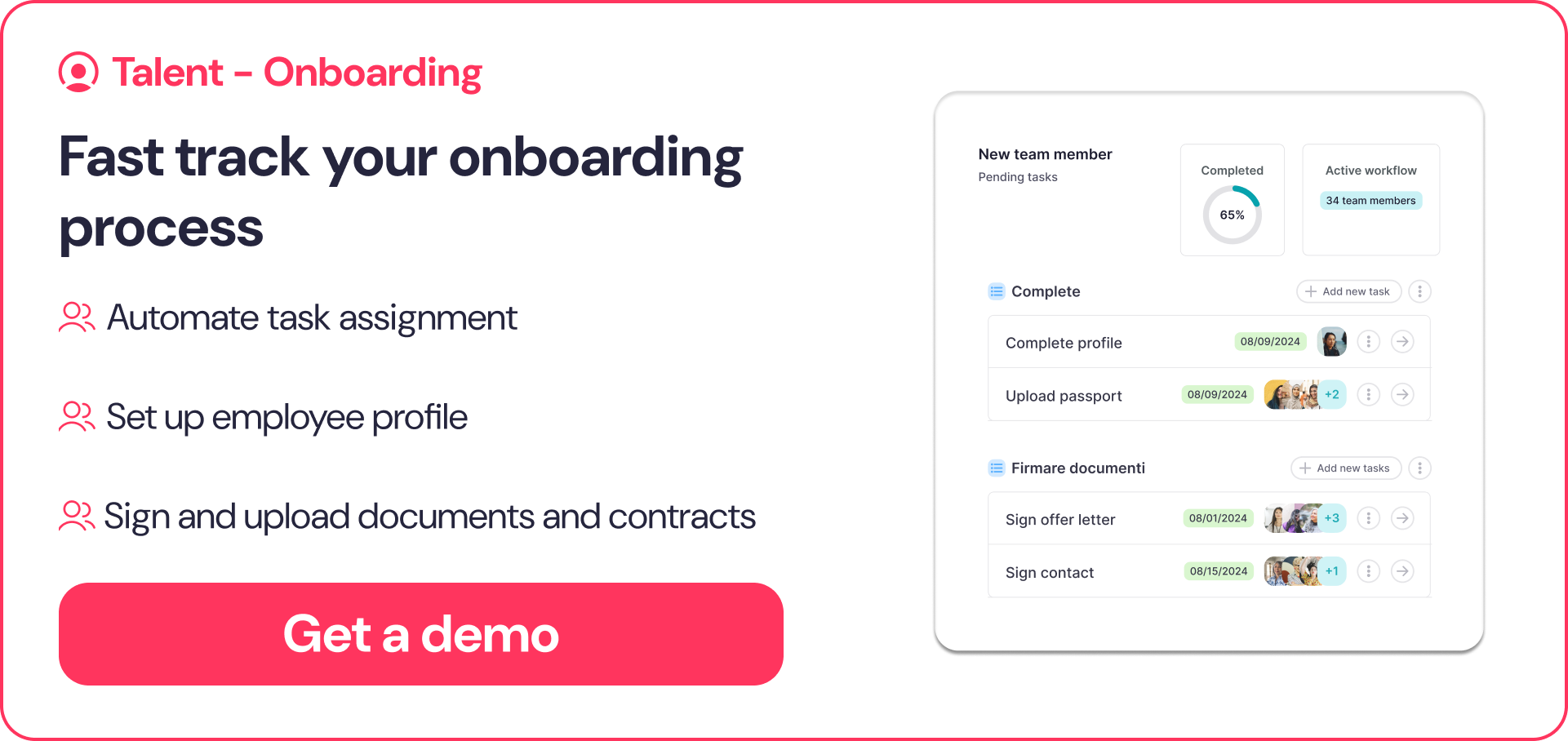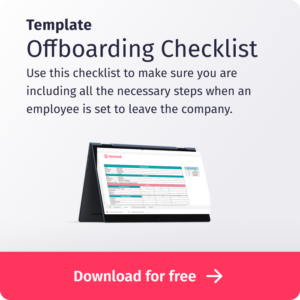The Arizona Worker Adjustment and Retraining Notification (WARN) Act safeguards workers, families, and communities during workforce changes, such as plant closings and mass layoffs. This article provides an overview of its components and enforcement, ensuring compliance and protection of employee rights. Learn how to issue a WARN notice in Arizona, when and who to notify, and everything else you need to know about the WARN Act in AZ.
TABLE OF CONTENTS
- Does Arizona have WARN Act?
- What is the Arizona WARN Act?
- WARN notices in Arizona
- What Triggers the WARN Act in Arizona?
- Arizona WARN Act Requirements
- How is the WARN Act Enforced in Arizona?
- Offboarding your workforce during a layoff
- Offboarding solutions 🚀
Does Arizona have WARN Act?
More than half of the states, Arizona included, don’t have their own state-level WARN Act. But that doesn’t leave Arizona workers unprotected. Federal WARN Act rules still apply to them. In Arizona, employers are still required to send out WARN notices to their workers. These notices should include info about expected mass layoffs and plant closures, as well as how many workers will be affected.
Some states are not only regulated by the federal WARN Act, like Ohio, Georgia and Florida, but have their own requirements and regulations specified in their so-called mini-WARN Acts. These states include: California, New York, New Jersey, Illinois, and more.
What is the Arizona WARN Act?
Arizona’s WARN Act is in place to protect workers facing layoffs or plant closures. Employers in Arizona have to give their employees advance notice when they know layoffs or closures are coming. This notice gives employees enough time to look for other jobs. It’s worth mentioning that the WARN Act works separately from the Fair Labor Standards Act (FLSA), which sets rules for things like minimum wage, overtime, and unemployment benefits. And it’s different from the Family and Medical Leave Act (FMLA) in Arizona, so they shouldn’t be mixed up.
On a similar note, however, Arizona holidays are determined both federally, and locally per state. Check out our federal holiday calendar for an updated and complete list.
WARN notices in Arizona
WARN notices in Arizona involve a 60-day advance notification requirement for employees facing layoffs or plant closures. If union workers are involved, union representatives have to be notified as well rather than only individual employees. While there’s no specific template for the notice, it must be in writing and include crucial information such as the site and date of closure or layoffs, reasons for the action, whether the loss is permanent or temporary, affected job titles, unions, and the number of employees, and who can be contacted for more information.
See previously issued WARN notices for the state of Arizona here.
Who do Arizona employers have to give a WARN notice?
Employers covered by the act must provide written notice to affected workers, labor unions representing these workers, the State Rapid Response Coordinator, and the chief elected official of the local government where the employment site is located. This notice should be delivered at least 60 days before the anticipated plant closing or mass layoff.
What Triggers the WARN Act in Arizona?
Certain situations trigger the WARN Act in Arizona:
1. Plant closings affecting 50 or more employees for at least 30 days.
2. Mass layoffs involving at least 500 full-time employees.
3. Mass layoffs involving at least 50 full-time employees, constituting 33% or more of the employer’s workforce.
4. Plant closings or layoffs extended over 90 days.
What is a plant closing?
When an employment site or facility is shut down, resulting in an employment loss for 50 or more employees during a 30-day period.
What are mass layoffs?
When a mass layoff occurs that does not result from a plant closing, but leads to an employment loss for 500 or more employees during a 30-day period, or for 50-499 employees if they constitute at least 33% of the employer’s active workforce.
What are extended layoffs?
When the cumulative employment losses for two or more groups of workers, each falling below the minimum threshold for notice, reach the threshold level during any 90-day period for either a plant closing or mass layoff.
Do you know the difference between layoffs, a reduction in force, and firing?
Arizona WARN Act Requirements
In Arizona, the WARN Act applies to employers with 100 or more workers, except those who’ve been on the job for less than six months in the past year or are working less than 20 hours a week. This law covers all sorts of employers, whether they’re making a profit, a nonprofit, or a public or quasi-public outfit doing business.
Employees who get a notice letter under the WARN Act include both hourly and salaried workers, as well as managers and supervisors. But business partners aren’t included in the notification requirements.
The main focus of the WARN Act in Arizona is making sure everyone has time to prepare before big job changes happen. Employers have to give advance notice before making changes that affect lots of employees.
Arizona encourages all employers to give WARN notices, even if they don’t legally have to because they don’t meet the minimum employee requirement or other criteria under the WARN Act.
How is the WARN Act Enforced in Arizona?
In Arizona, the Arizona WARN Act is enforced through the United States District Courts. If workers, their representatives, or local government units believe an employer has violated the Act, they have the right to file individual or class-action lawsuits. The court may decide to award reasonable attorney’s fees to the winning side as part of the overall costs.
Breaking the rules of the WARN Act in Arizona, such as not giving enough notice, can lead to penalties. This might include paying affected workers back pay and fines of up to $500 for each day of violation. Employers have to settle any debts with affected employees within three weeks of a layoff or closure. Failing to follow these rules could mean facing lawsuits in the U.S. District Court, either individually or as a class action.
Consult with Arizona labor lawyers to address potential violation claims and always read the official sources before making any decisions, as laws are subject to change.
Why is the Arizona WARN Act important?
Understanding the Arizona WARN Act is a must for HR managers in order to navigate workforce changes compliantly and ensure the rights of employees are upheld during workforce transitions.
Related: Compliance calendar for HR
Offboarding your workforce during a layoff
Once you’ve followed all the required steps mandated by Arizona during plant closings and mass layoffs, it’s time to begin the offboarding process at your company. Offboarding so many employees at the same time can be a time consuming and costly process, but with the right HR software, it can be easy.
How to offboard employees with HR software
Factorial simplifies the offboarding process, streamlining tasks and ensuring a smooth transition for departing employees. With Factorial, you can efficiently manage exit procedures, such as collecting company assets, updating access permissions, and conducting exit interviews. Offboarding software simplifies the entire process from start to finish.
Key Features for offboarding during layoffs:
1. Clear Communication: Easily communicate departure details to the departing employee, including the last day of work, return of company property, and other essential information.
2. Task Automation: Automate offboarding tasks, such as revoking system access, updating records, and notifying relevant departments, saving time and minimizing the risk of oversight.
3. Documentation and Compliance: Ensure compliance by generating necessary documentation, such as termination letters and exit surveys, helping you maintain a comprehensive record of the offboarding process.
4. Access Control: Centralize access control management, making it simple to revoke access to company systems and confidential information, safeguarding your organization’s data.
By utilizing Factorial for offboarding, HR managers can enhance efficiency, maintain compliance, and provide a positive experience for departing employees.






